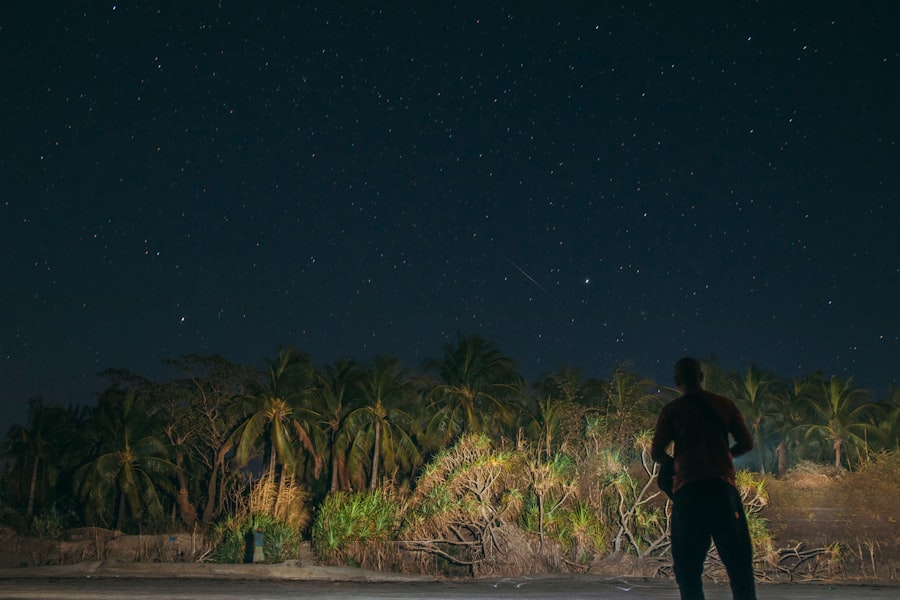Discovering the Mysterious Chocolate Hills
Description
The Chocolate Hills, a geological wonder located in Bohol, Philippines, are steeped in local folklore and legend. One of the most popular tales recounts the story of two giants, Arogo and Aluya, who fell in love with a beautiful mortal woman. Their rivalry over her affection led to a fierce battle that lasted for days.
In their fury, they hurled boulders at each other, creating the hills as they fought. Once the battle was over, Arogo, heartbroken by the loss of Aluya, wept for days. His tears turned into the lush green hills that eventually dried up under the sun, transforming them into the brown mounds we see today.
This poignant tale not only explains the origin of the hills but also reflects the deep emotional connection that the local people have with their natural landscape. Another legend tells of a giant named Datu Uwak who was known for his immense strength and size. He was said to have created the hills as a means to impress his beloved.
After he successfully won her heart, he decided to leave the hills as a testament to his love. This narrative highlights the themes of love and sacrifice, which resonate deeply within the local culture. The Chocolate Hills have thus become more than just a natural phenomenon; they are a symbol of love, rivalry, and the rich tapestry of Boholano folklore.
These stories are passed down through generations, enriching the cultural heritage of the region and drawing visitors who are eager to learn about the myths that surround this unique landscape.
Key Takeaways
- The Chocolate Hills in the Philippines are a natural wonder and a legendary attraction, with a unique and mysterious origin story.
- The formation of the Chocolate Hills is a result of limestone weathering and erosion over millions of years, creating their iconic conical shape.
- The Chocolate Hills are home to a diverse range of flora and fauna, including rare and endemic species that thrive in this unique environment.
- The Chocolate Hills hold great cultural significance for the local community, with myths and folklore surrounding their creation and existence.
- Conservation efforts are underway to protect the Chocolate Hills from environmental threats and human impact, ensuring their preservation for future generations.
Formation and Geology of the Chocolate Hills
The Chocolate Hills are not merely a product of myth; their formation is rooted in fascinating geological processes that have taken place over millions of years. These hills are primarily composed of limestone, which has been shaped by a combination of erosion and weathering. The process began during the Pleistocene epoch when marine organisms deposited calcium carbonate on the ocean floor.
The unique conical shape of the Chocolate Hills is attributed to karst topography, which is characterized by features such as sinkholes, caves, and underground rivers. Rainwater, slightly acidic due to dissolved carbon dioxide, seeps into the limestone, gradually eroding it and forming depressions.
As erosion continues, the surrounding land is worn away, leaving behind these distinct mounds. The hills are particularly striking during the dry season when the grass covering them turns brown, resembling chocolate kisses scattered across the landscape. This seasonal transformation not only enhances their visual appeal but also contributes to their name and allure.
Flora and Fauna of the Chocolate Hills

The biodiversity surrounding the Chocolate Hills is as remarkable as their geological features. The area is home to a variety of plant species that thrive in its unique environment. Grasses dominate the landscape, particularly during the dry season when they turn a rich brown hue.
However, during the rainy season, these grasses flourish and provide a vibrant green carpet that contrasts beautifully with the hills’ shapes. Among these grasses are several endemic species that have adapted to the specific conditions of Bohol’s climate and soil. In addition to its flora, the Chocolate Hills are also a habitat for diverse wildlife.
Various bird species can be spotted soaring above or nesting in the trees that dot the landscape. The Philippine tarsier, one of the world’s smallest primates, is another notable resident of this region. With its large eyes and unique nocturnal habits, this tiny creature has become an emblem of Bohol’s rich biodiversity.
The presence of such species highlights the ecological importance of preserving this area not only for its stunning views but also for its role in supporting wildlife.
Cultural Significance of the Chocolate Hills
| Aspect | Details |
|---|---|
| Location | Bohol, Philippines |
| Number of Hills | 1,268 |
| Formation | Geological formation of limestone |
| Cultural Significance | Considered a National Geological Monument |
| Legends | Associated with local folklore and myths |
| Tourism | Major tourist attraction in the Philippines |
The Chocolate Hills hold profound cultural significance for the people of Bohol. They are not merely a tourist attraction; they are an integral part of local identity and pride.
Festivals celebrating Bohol’s heritage frequently incorporate elements inspired by these geological formations, showcasing their importance in community life. Moreover, the Chocolate Hills have become a symbol of resilience for the people of Bohol. Following natural disasters such as earthquakes and typhoons that have impacted the region, these hills stand as a testament to nature’s enduring beauty and strength.
They remind locals and visitors alike of the importance of environmental stewardship and cultural preservation. The hills serve as a gathering point for community events and celebrations, reinforcing social bonds among residents while attracting tourists who wish to experience Bohol’s rich cultural tapestry.
Conservation Efforts and Protection of the Chocolate Hills
Recognizing the ecological and cultural significance of the Chocolate Hills, various conservation efforts have been initiated to protect this unique landscape. The Philippine government has designated parts of Bohol as protected areas to ensure that development does not encroach upon these natural wonders. Local organizations and environmental groups work tirelessly to raise awareness about sustainable tourism practices that minimize environmental impact while promoting responsible visitation.
Community involvement is crucial in these conservation efforts. Local residents are encouraged to participate in initiatives aimed at preserving their natural heritage. Educational programs focus on teaching both locals and tourists about the importance of protecting biodiversity and maintaining ecological balance in the region.
By fostering a sense of ownership among residents regarding their environment, these efforts aim to create a sustainable model for tourism that benefits both people and nature.
Best Ways to Experience the Chocolate Hills

Experiencing the Chocolate Hills is an adventure that can be tailored to suit various interests and preferences. One popular way to take in their beauty is through hiking or trekking along designated trails that offer panoramic views of the hills from different vantage points. The most famous viewpoint is located at the Chocolate Hills Complex in Carmen, where visitors can climb a viewing platform for an unobstructed view of this breathtaking landscape.
For those seeking a more immersive experience, guided tours often include visits to nearby attractions such as local farms or traditional villages where visitors can learn about Boholano culture firsthand. ATV rides through rugged terrain provide an exhilarating way to explore lesser-known areas around the hills while enjoying stunning scenery along the way. Additionally, hot air balloon rides offer a unique perspective from above, allowing travelers to appreciate the vastness and beauty of this natural wonder from an entirely different angle.
Fun Facts and Trivia about the Chocolate Hills
The Chocolate Hills are not only visually stunning but also come with an array of intriguing facts that enhance their allure. For instance, there are approximately 1,268 hills spread across an area of over 50 square kilometers; however, estimates suggest there could be as many as 1,776 hills when accounting for those yet to be discovered or counted accurately. This variability adds an element of mystery to their formation.
Another fascinating aspect is that these hills are often compared to other geological formations around the world but remain unique in their composition and appearance. Unlike other similar formations found in countries like Vietnam or China, which may be covered in dense vegetation or have different geological origins, the Chocolate Hills stand out due to their distinct conical shapes and seasonal color changes. Furthermore, they were declared a National Geological Monument in 1988 and were nominated as one of the New7 Wonders of Nature in 2009, underscoring their global significance.
The Future of the Chocolate Hills: Challenges and Opportunities
As with many natural wonders around the world, the future of the Chocolate Hills faces both challenges and opportunities. Rapid tourism development poses significant risks to this delicate ecosystem; increased foot traffic can lead to erosion and habitat destruction if not managed properly. Balancing economic growth with environmental sustainability is crucial for preserving this iconic landscape for future generations.
On the other hand, there are opportunities for innovative conservation strategies that can enhance both tourism and environmental protection. Eco-tourism initiatives can promote responsible travel practices while providing economic benefits to local communities. By investing in sustainable infrastructure and education programs aimed at both tourists and residents alike, stakeholders can work together to ensure that the Chocolate Hills remain a cherished part of Bohol’s heritage while continuing to inspire awe in all who visit them.
In conclusion, while challenges exist regarding conservation and sustainable tourism practices surrounding this remarkable site, there is also great potential for collaboration among local communities, government agencies, and environmental organizations to protect this natural treasure for years to come. The Chocolate Hills stand not only as a testament to nature’s artistry but also as a reminder of our responsibility to safeguard such wonders for future generations.
If you’re a fan of exploring unique destinations like the Chocolate Hills in the Philippines, you may also enjoy reading about the most-viewed apps in the country. Check out the article here to discover popular apps that are trending among Filipino users.
FAQs
What are the Chocolate Hills?
The Chocolate Hills are a geological formation located in the Bohol province of the Philippines. They are made up of around 1,200 to 1,776 conical limestone hills, which are covered in green grass that turns brown during the dry season, giving them a chocolate-like appearance.
How were the Chocolate Hills formed?
The exact formation process of the Chocolate Hills is still a subject of debate among geologists. However, it is widely believed that they are the result of the uplift of coral deposits and the action of rainwater and erosion over millions of years.
What is the significance of the Chocolate Hills?
The Chocolate Hills are a major tourist attraction in the Philippines and are considered a natural wonder. They have been declared the country’s third National Geological Monument and are also proposed for inclusion in the UNESCO World Heritage List.
Can visitors explore the Chocolate Hills?
Yes, visitors can explore the Chocolate Hills by climbing to the top of some of the hills, where they can enjoy panoramic views of the surrounding countryside. There are also viewing decks and platforms for tourists to take in the beauty of the landscape.
Is there any wildlife in the area of the Chocolate Hills?
The area surrounding the Chocolate Hills is home to a diverse range of flora and fauna, including various species of birds, butterflies, and plants. The hills are also part of the Chocolate Hills Complex, which includes a protected area for conservation and ecotourism.





